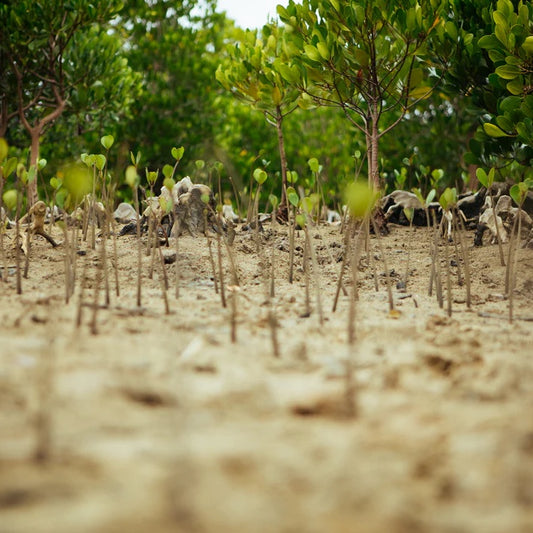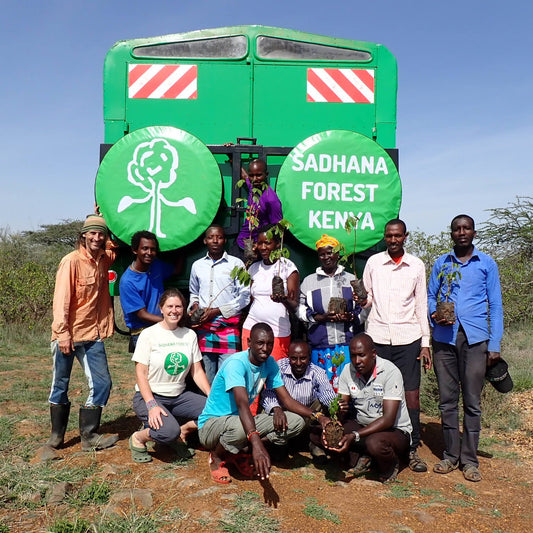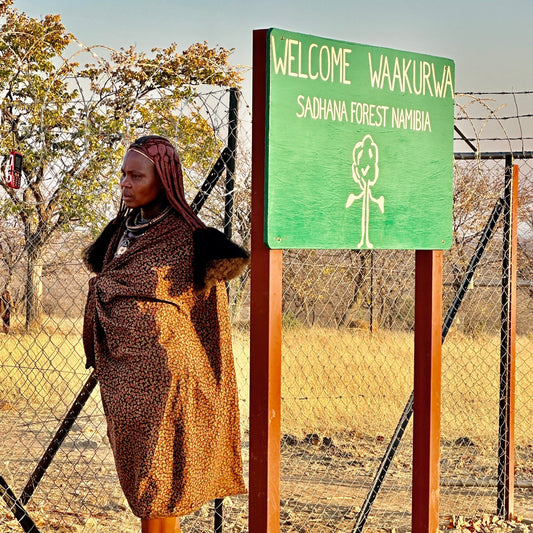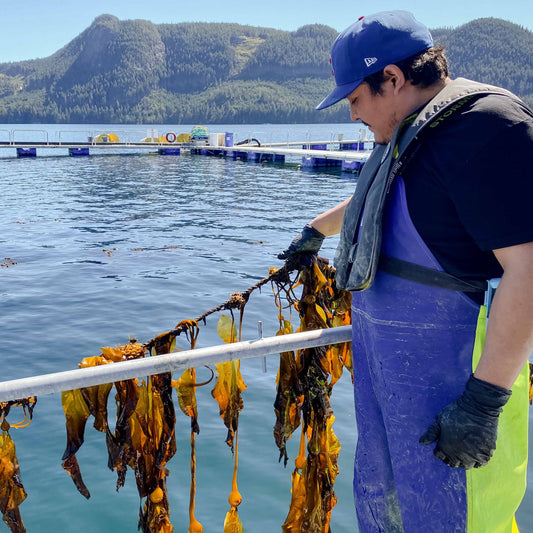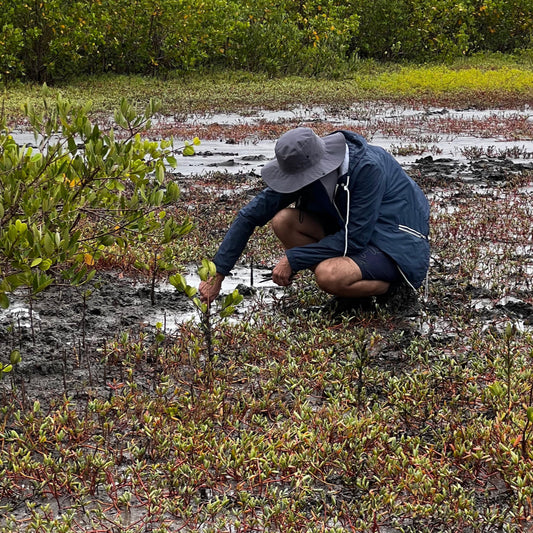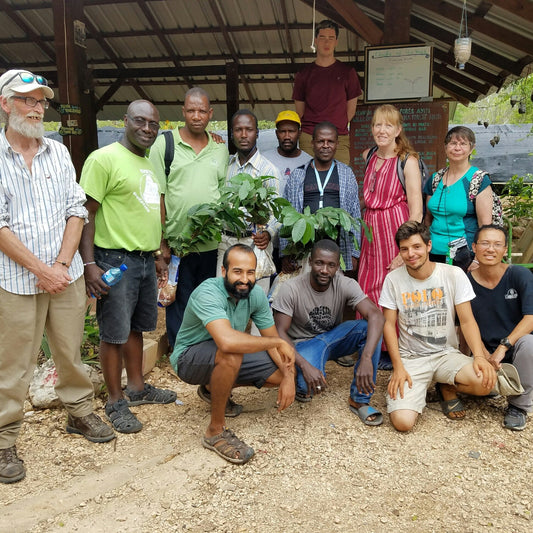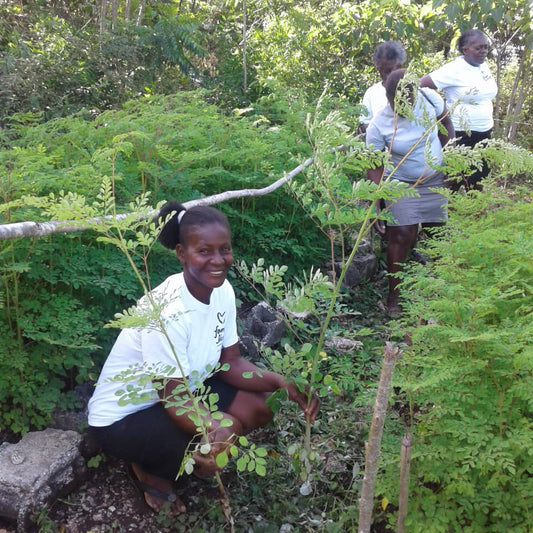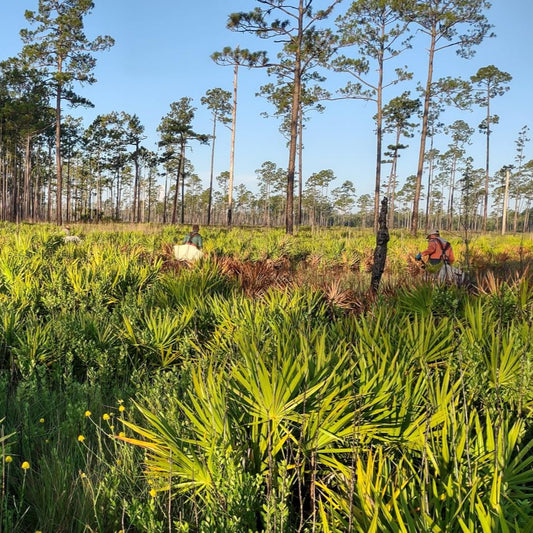In a world where climate change is an ever-growing concern, taking steps to reduce and offset your carbon footprint has never been more critical. One impactful way to do this is by planting trees. Trees absorb carbon dioxide (CO2), a significant greenhouse gas, and convert it into oxygen, making them nature’s carbon offsetters. But how many trees do you need to plant to offset your daily activities? Let’s dive into the numbers and science behind it.
What is a Carbon Footprint?
A carbon footprint is the total amount of CO2 and other greenhouse gases emitted directly or indirectly by an individual, organization, or product. Common activities contributing to your carbon footprint include driving a car, flying on an airplane, using electricity, and even eating certain foods. Reducing your carbon footprint helps combat climate change, and planting trees is one of the most accessible ways to offset unavoidable emissions.

Image source: Decode 6
How Trees Offset Carbon Emissions
Trees play a vital role in capturing CO2 through a process called photosynthesis. On average, a mature tree can absorb about 48 pounds of CO2 per year. While this rate varies based on the tree species, age, and location, it provides a useful baseline for calculating how many trees are needed to offset specific activities.

Trees Needed to Offset Common Activities
Here’s a detailed breakdown of the CO2 emissions from common activities, grouped by category, their annual emissions, and the approximate number of trees required to offset them annually. CO2 emissions are based on average U.S. household or lifestyle data, sourced from reputable databases such as the EPA’s greenhouse gas equivalencies and Carbon Trust.
Transportation
| Activity (Frequency) | Annual CO2 Emission (lbs) | Trees Needed (Annual) |
|---|---|---|
| Purchasing a new car (production impact) | 14000 | 292 trees |
| Driving 12,000 miles annually | 9200 | 192 trees |
| Taking a cruise (7 days in a year) | 8000 | 167 trees |
| Flying (NYC to London roundtrip, 1 trip/year) | 1800 | 38 trees |
| Daily commuting by bus (10 miles/day) | 1800 | 38 trees |
| Commuting by car (20 miles/day, annually) | 2200 | 46 trees |
| Driving a motorcycle (monthly average) | 1000 | 21 trees |
| Driving an electric vehicle (monthly average) | 800 | 17 trees |
| Taking a weekend road trip (200 miles) | 300 | 6 trees |
| Riding an electric scooter (1 mile/day) | 150 | 3 trees |
| Taking a domestic flight (2-hour flight) | 500 | 10 trees |
| Taking an Uber/Lyft ride (5 miles, weekly) | 100 | 2 trees |
Home Energy Use
| Activity (Frequency) | Annual CO2 Emission (lbs) | Trees Needed (Annual) |
| Using electricity (average monthly usage) | 10800 | 225 trees |
| Heating a home with natural gas (seasonal) | 6000 | 125 trees |
| Using an air conditioner (summer months) | 2000 | 42 trees |
| Running a refrigerator | 200 | 4 trees |
| Using a clothes dryer (once a week) | 500 | 10 trees |
| Taking a shower (10 minutes daily) | 110 | 2 trees |
| Using a dishwasher daily | 330 | 7 trees |
Dietary Choices
| Activity (Frequency) | Annual CO2 Emission (lbs) | Trees Needed (Annual) |
| Eating a meat-heavy diet (daily) | 5000 | 104 trees |
| Consuming poultry (weekly, 1 lb) | 1500 | 31 trees |
| Eating a vegan diet (daily) | 1200 | 25 trees |
| Eating rice (1 lb cooked weekly) | 78 | 2 trees |
| Eating cheese (1 lb/week) | 12 | 1 tree |
| Drinking beer (weekly, 6-pack) | 600 | 13 trees |
| Drinking wine (1 bottle/week) | 200 | 4 trees |
| Daily coffee consumption (1 cup/day) | 155 | 3 trees |
| Eating chocolate desserts (weekly, 1 lb) | 800 | 17 trees |
Consumer Goods
| Activity (Frequency) | Annual CO2 Emission (lbs) | Trees Needed (Annual) |
| Buying fast fashion (5 items annually) | 1200 | 25 trees |
| Wearing leather shoes (1 pair/year) | 200 | 4 trees |
| Purchasing a new smartphone | 180 | 4 trees |
| Buying a pair of jeans | 66 | 1.5 trees |
| Manufacturing a bicycle | 530 | 11 trees |
| Shopping online (10 packages annually) | 500 | 10 trees |
| Printing documents (1,000 pages/year) | 120 | 2.5 trees |
| Donating used clothes (annually) | 300 | 6 trees |
Miscellaneous
| Activity (Frequency) | Annual CO2 Emission (lbs) | Trees Needed (Annual) |
| Hosting a wedding with 100 guests | 3000 | 63 trees |
| Attending a conference (3-day event) | 1000 | 21 trees |
| Owning a dog (average annual footprint) | 4000 | 83 trees |
| Owning a cat (average annual footprint) | 1800 | 38 trees |
| Streaming 10 hours of video weekly | 2000 | 42 trees |
| Using LED lights instead of incandescent | 150 | 3 trees |
| Recycling 1 ton of waste (annually) | 800 | 17 trees |
| Hosting a party for 20 people (1 event/year) | 800 | 17 trees |
Note: Figures are based on approximate annual averages for a U.S. lifestyle and rounded for simplicity. For detailed information, see the EPA’s greenhouse gas equivalencies and Carbon Trust.
How to Calculate Your Carbon Footprint
The average U.S. resident emits approximately 40,500 lbs (20.25 tons) of CO2 annually, requiring ~844 trees per year or 70 trees per month to offset their carbon footprint. If you’re curious about your specific emissions, follow these steps:
1. Estimate Your Emissions: Use online carbon calculators or refer to general estimates for activities.2. Divide by Tree Absorption Rate: Divide your total emissions by 48 pounds (or 0.024 tons) to find the number of trees needed annually.
Steps to Offset Your Carbon Footprint with Trees
1. Choose a Tree Planting Project: Find a project that plant trees in regions with the most significant environmental impact.2. Estimate the Number of Trees Needed: Use the table above or your calculated footprint to determine the number of trees to plant.
3. Take Action: Plant tree gifts for yourself or in the name of loved ones.
4. Combine with Other Efforts: Reduce your footprint by driving less, conserving energy, or adopting a plant-based diet.
FAQs
How quickly do trees absorb carbon?
Trees absorb carbon at different rates depending on their species, age, and environmental conditions. Young trees grow faster and absorb more carbon initially, often during their first 20 years. However, mature trees store carbon more efficiently over the long term. For example:
- Fast-Growing Trees (e.g., poplars and eucalyptus): Absorb significant CO2 in their early years, making them effective for rapid offsetting.
- Mangroves: Sequester carbon both in their biomass and in the soil, providing an exceptionally high absorption rate over time.
- Food Forests: While their primary goal is biodiversity and food production, they still contribute meaningfully to carbon absorption, particularly as the trees mature.
It typically takes several years for newly planted trees to reach peak absorption levels. This is why combining tree planting with immediate emission reduction efforts is vital for effective climate action.
Can I offset my entire footprint with trees?
Yes, it is possible to offset your entire carbon footprint with trees, but it’s important to adopt a multi-faceted approach to sustainability. While planting trees is an impactful way to absorb CO2 emissions, there are additional steps you can take to reduce your overall footprint:
- Conserve Energy: Reduce electricity usage by switching to energy-efficient appliances and turning off lights and devices when not in use.
- Switch to Renewable Energy: Consider installing solar panels or subscribing to green energy programs.
- Adopt Sustainable Transportation: Use public transport, carpool, bike, or switch to electric vehicles.
- Minimize Waste: Practice recycling, composting, and reducing single-use plastics.
- Choose a Plant-Based Diet: Reducing meat consumption significantly lowers your carbon footprint.
By combining tree planting with these actions, you can make a more substantial and lasting impact on the environment.
What types of trees are best for carbon offsetting?
Native tree species that grow well in their local environments are ideal for carbon offsetting. They are more resilient, support biodiversity, and absorb CO2 efficiently over their lifetimes. Some species, such as mangroves, are particularly effective due to their ability to sequester large amounts of carbon both in their biomass and in the soil.
The following projects from Greenr Gifts are particularly effective:
Mangrove Planting Projects: Mangroves are among the most effective ecosystems for carbon sequestration, storing up to four times more carbon than terrestrial forests. Our mangrove project in Kenya focus on restoring coastal ecosystems, which also protect against storm surges and support marine biodiversity.
Kelp Forest Restoration: While not a tree, kelp forests act as underwater carbon sinks, absorbing CO2 rapidly. Our kelp seaforestation project in Canada contributes to restoring marine ecosystems while capturing significant amounts of carbon.
Food Forests: Food forests not only offset carbon but also provide long-term benefits like food security, improved soil health, and increased biodiversity. By planting fruit and nut trees, our food forests in India, Haiti, Namibia and Kenya support local communities and ecosystems, making them an excellent choice for holistic environmental impact.
Ready to offset your carbon footprint?
Start planting today with Greenr Gifts and join the movement to create a greener, healthier world. Every tree counts!





